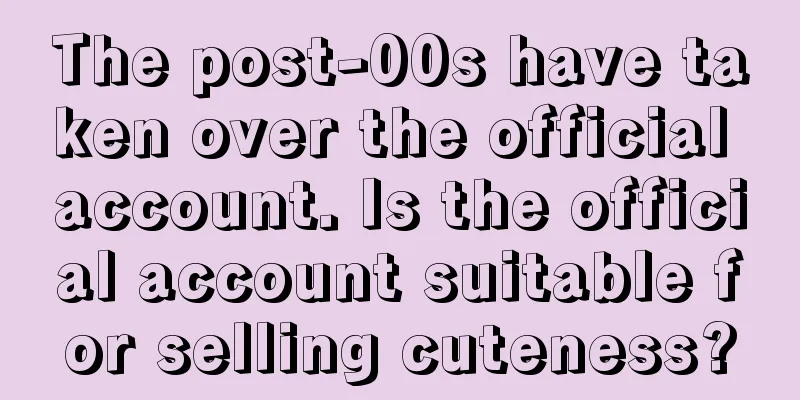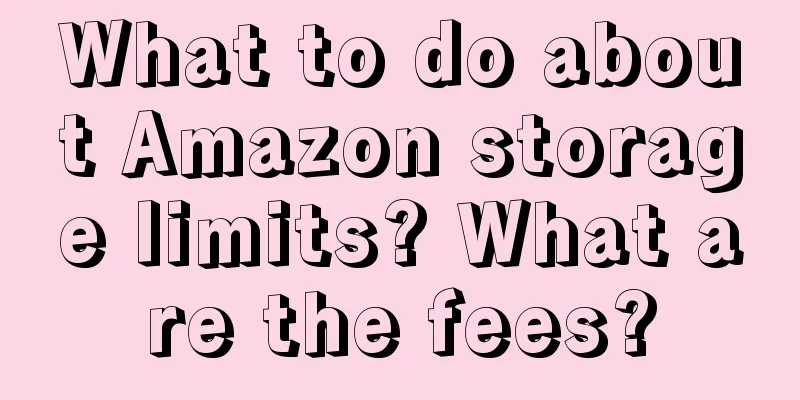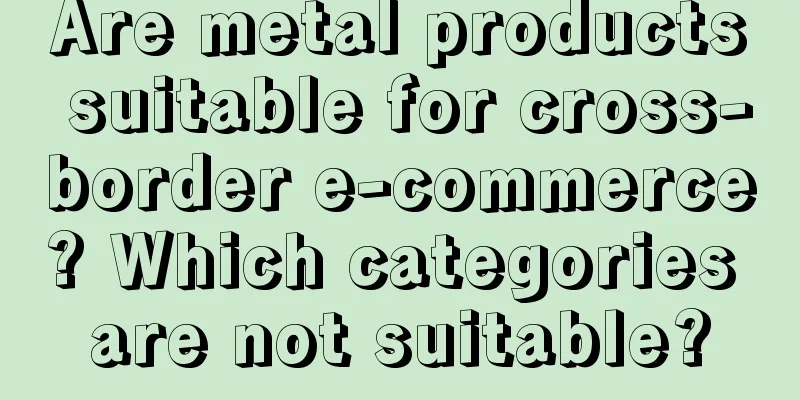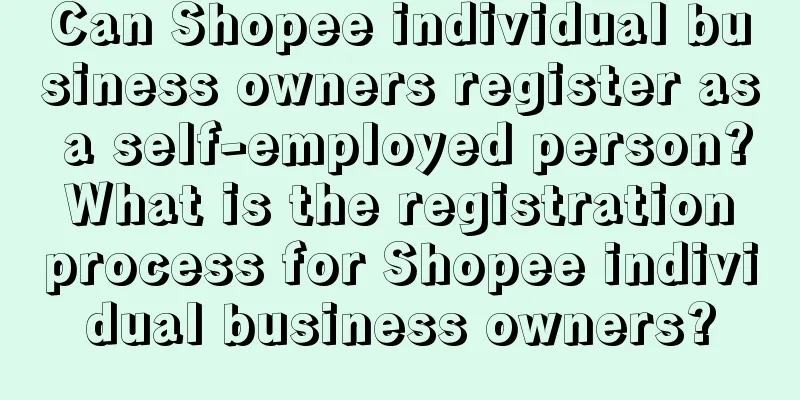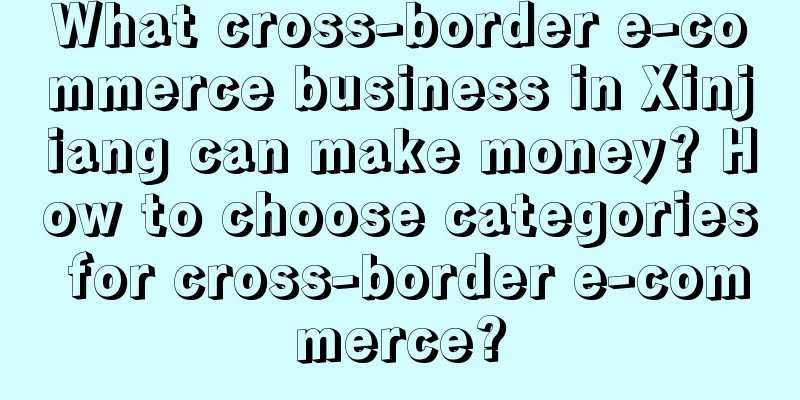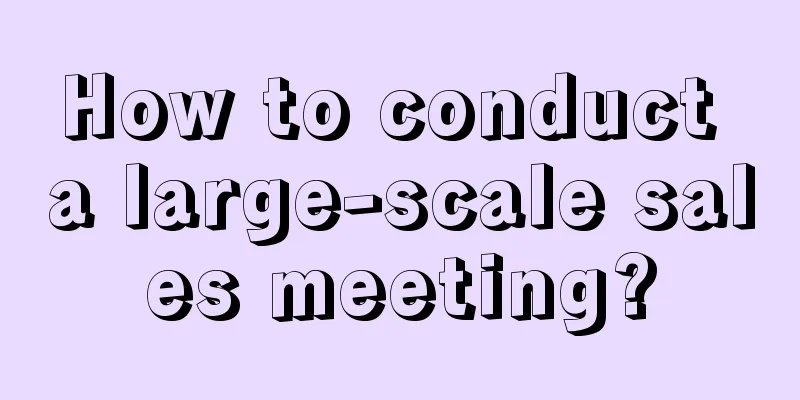The cold weather is pressing, does Party A still want to build a brand?

Faced with a variety of uncertainties, most people are pessimistic about their forecasts for the future market. Even Huawei's Ren Zhengfei expressed the so-called "chill theory" in an internal speech, which shows how severe the current market environment is. Against this backdrop, all companies are cutting their marketing budgets. In terms of performance marketing, companies’ assessment of ROI has become more stringent than ever before, and will not tolerate any waste or slackness. Investment in brand marketing is more cautious. After all, brand building is a large project with long-term investment, and it is difficult to produce immediate effects on corporate performance in a short period of time. Therefore, many companies can't help but wonder "should they continue to invest in brands?" Many companies have even cut their entire brand marketing budgets, and everything is oriented to business results! So during the winter period, should companies really give up brand investment? 1. What value does the brand bring to the company?Before answering the question of "should we give up brand investment", we must first know what the main value of the brand is to the enterprise? And can these positive values be abandoned by the enterprise? David Aaker, the father of modern brand marketing, believes that brand assets are a series of assets related to brand names and logos, which can not only create value for enterprises but also for customers; and brand assets mainly include "brand awareness", "brand loyalty", "perceived quality" and "brand association". Based on the analysis of the four main items of brand assets, Lao Pao believes that the value of a brand is mainly reflected in the following aspects. The first level is to "expand brand influence": attract consumer attention and bring in basic trafficIn today's information explosion, we generally believe that brand exposure and brand influence are relatively virtual; first, consumers receive massive amounts of information every day, and will automatically filter out or quickly forget the advertising-related parts; second, even if consumers know the brand through brand advertising, it is difficult to immediately bring about a substantial increase in the company's sales, as the saying goes, distant water cannot quench immediate thirst. However, in fact, mental traffic can often be converted into real traffic. For example, if you plan to buy a new energy vehicle recently, the first brands that come to your mind must be Tesla, NIO, Ideal, Xpeng, and BYD, because they are currently the most famous brands in the new energy vehicle field; then you will go online to learn about their models that meet your needs and are within your budget, and finally make an appointment to test drive in the store. This is a typical scenario of converting mental traffic into real traffic. Although mental traffic cannot be counted and monitored, it unconsciously affects consumers' behavior and decision-making. The basic premise for winning mental traffic in the market is that the brand has sufficient visibility and influence. The second level is “guiding user preferences”: forming advantages or differentiated cognition and improving conversion rateIt is far from enough for a brand to have only fame and influence. Only products that meet consumer needs and give consumers reasons to buy can induce purchasing behavior. And an effective reason to buy is either an advantage over competitors or a differentiated selling point exclusive to the brand/product. With competitive advantages or differentiated selling points, it is easy to win consumers' favor for brands and products. Take the purchase of new energy vehicles as an example. You have a family so you plan to buy an SUV, and the purchase budget is 300,000-500,000 yuan. At the same time, you pay more attention to the value retention of the vehicle. Through detailed understanding of various brands and SUV models on the Internet, you find that each brand has its own advantages. Tesla's advantages are "technology and value retention", NIO focuses on "service and battery replacement model", Ideal is relatively leading in "space and comfort", and Xiaopeng is "intelligence and cost-effectiveness"... After preliminary judgment, you find that Tesla's selling points are more impressive to you; after the test drive experience, Tesla can better meet your own needs, so you have a stronger preference and willingness to buy it. The third level is “building user loyalty”: old users repurchase/support the brand, forming a good reputationIn an environment where the cost of acquiring new customers is surging and existing customers are competing, every old customer is a treasure for the brand. Compared with persuading a new customer to buy, the difficulty and cost of converting an old customer are much lower. At the same time, old customers are often the most persuasive evangelists of the brand, who can help the brand establish a good reputation in the market and attract more attention and purchases. Among new energy vehicle brands, NIO has reached the ceiling level in terms of user loyalty; NIO has created a culture of ownership among its car owners, making users believe that the NIO brand belongs to every car owner. And through high-frequency car owner activities, links are constantly established between the brand and users, and between users, giving users a strong sense of belonging to the brand; when NIO got into trouble two years ago, NIO owners even spontaneously organized and advertised for the brand at their own expense. In addition, NIO continues to deepen its efforts in service and experience and has achieved the ultimate, and has successively launched super services such as NIO LIFE, NIO DAY, NIO POWER, NIO SERVICE, NIO HOUSE, etc. It is not limited to selling cars, but hopes to create a pleasant lifestyle for users. The fourth level is “creating brand premium”: users are willing to pay a high cost and feel proudGenerating brand premium is the ultimate goal of all companies making brand investments. When brand power and brand culture reach a certain stage, the brand will not only meet consumers' physical needs, but will become a spiritual belief and identity symbol; consumers are willing to pay for this spiritual value and pay a higher cost in time and money. Luxury goods, watches, luxury cars, and luxury homes are usually the industries with the largest investments in brand advertising. Their goal is to use advertising to continuously promote brand concepts in order to establish and maintain brand premiums. Consumers purchase these items either because they psychologically identify with the concepts/lifestyles conveyed by the brand, or because the brand can represent a scarce social status and identity. 2. How to balance brand investment?From expanding brand influence - guiding user preferences - building user loyalty - generating brand premium, the value of brand to the company becomes increasingly profound, helping the company build an indestructible moat. The more turbulent the market is, the more companies with strong brand power will be able to resist risks. In the three years since the outbreak of the epidemic, many companies have indeed achieved counter-cyclical growth. Swiss watchmaking companies with strong brand power, such as Rolex, Cartier, Omega, Patek Philippe, and Audemars Piguet, have all achieved counter-cyclical growth. In China, Luckin Coffee, which is well-known for its insistence on product and business linkage, has surpassed Starbucks in domestic stores and has also achieved profitability for the first time... This shows that no matter what the market environment is, brand building cannot be completely abandoned: first of all, in this era where good wine needs to be hidden, brands are the bridge for consumers to recognize; secondly, in the face of the current situation where supply far exceeds demand, brands can reduce consumers' decision-making costs and generate stronger trust; at the same time, brands can prevent companies from falling into the vortex of low-price competition and form a strong brand moat. There are only two types of companies that may not need to build brands. One is the company that aims to cut leeks and runs away after cutting; the other is the company that wants to exit the market after grabbing a wave of dividends and rushes to wherever there are dividends. The original intention of these two types of companies is to make a quick buck, without considering the long-term development and market reputation of the company. But for a normal enterprise, how should it weigh the intensity of brand investment when facing a severe survival crisis? Many people have misunderstandings about brand building, thinking that branding means overwhelming advertising, organizing activities, and cross-border activities. Xiao Ma Song once said, "Marketing is not about doing one big thing, but about doing every little thing well." In fact, branding does not necessarily mean doing some loud and widely disseminated brand actions, but doing every small link of the brand well, and constantly accumulating to eventually form a strong brand potential. In terms of brand building, each company can invest selectively based on its own strength: start-ups can do things with low investment costs and high input-output ratios, such as self-media matrix operations, private domain traffic pool construction, brand resource replacement, content marketing, etc. Fast-growing companies must adhere to the principle of brand-effect linkage. Every expenditure of the brand budget must be evaluated in terms of its effect on business conversion. For example, when hiring a celebrity to endorse a product and shooting brand ads, some performance ads should also be shot as the delivery material for the performance ads, because performance materials endorsed by celebrities can often significantly increase conversion rates. At the same time, all marketing must have a clear conversion path. For large companies with mature and stable businesses, continuous investment in brand is a very important task. The budget for brand marketing should be more than that for performance marketing (the figure below is a reference for the investment ratio of brand advertising and performance advertising for companies with different revenue ranges); because brands can bring continuous basic traffic, maintain the product premium brought by the brand, and ultimately consolidate the company's moat. Blindly pursuing sales results is like drinking poison to quench thirst, which will eventually backfire on the company; and when facing an uncertain market, brand is usually the certainty factor! Author: Laopao; Author's public account: Laopao OG (ID: laopaostrategy) |
<<: Stories help brands spread better
>>: If you set up a stall selling grilled sausages, how can you stand out from the crowd?
Recommend
1000 original articles completed! Here's a 3000-word summary for you!
The author shares his creative ideas for writing 1...
How to bid for Amazon manual advertising? What are the delivery methods?
For Amazon merchants, they need to do a good job o...
How does Amazon select unpopular products? What are the techniques?
Now there are more and more merchants opening stor...
Is it necessary to pay the deposit of Shopee? What will happen if I don't pay it?
In fact, more and more people are now aware that c...
Changing 800 sets of clothes in one minute! What new tricks have the women's clothing live broadcast room come up with?
In this article, let's learn how @紫嫣红藤服装 subve...
TikTok has “resurrected” in the United States. What do practitioners think?
From the short suspension of service to the rapid ...
Breaking the bottleneck of private domain marketing! An innovative way to manage private domain users of thousands of chain stores
As companies expand rapidly across the country, pr...
I used DeepSeek to write an impeccable marketing plan for Xiaohongshu
"DeepSeek empowers Xiaohongshu marketing, a n...
Is it necessary to rent a warehouse for FBA? How to choose a warehouse?
We have opened a store on Amazon, and there are ma...
With Xiaohongshu, brand marketing has entered the "individual era"
The operation of Xiaohongshu requires the manager ...
Having been ranked first in the category for 12 consecutive years, how does the laundry detergent king "Blue Moon" use private domains to achieve performance growth?
Nowadays, many brands have begun to focus on "...
How long does it take for Shopee to ship? What are the rules?
Shopee is an e-commerce platform in Southeast Asia...
Will I be hacked if I buy EBplay? Is ebplay wallet a legitimate platform?
In today's digital age, electronic wallets are...
New Hope’s private domain analysis shows that customer acquisition has increased 10 times, with a repurchase rate of up to 50%. How do fast-moving consumer goods brands play in the private domain?
This article takes the New Hope Dairy Company, whi...
With the launch of mutual selection advertising, is there a “way out” for public accounts to monetize?
Have you ever learned about the operation of publi...
